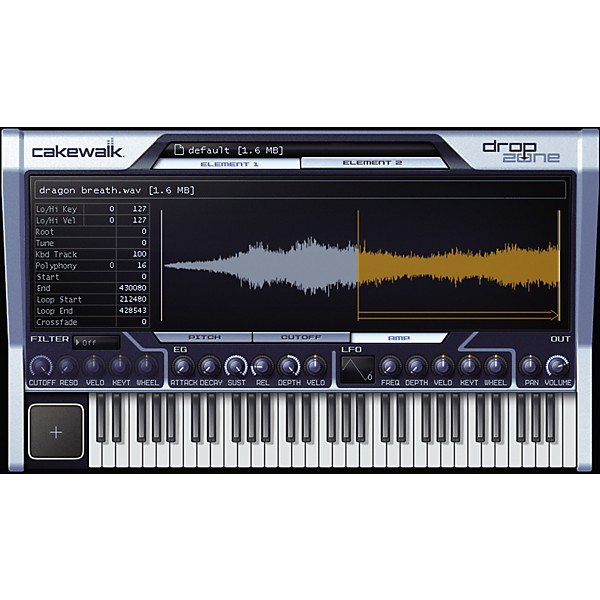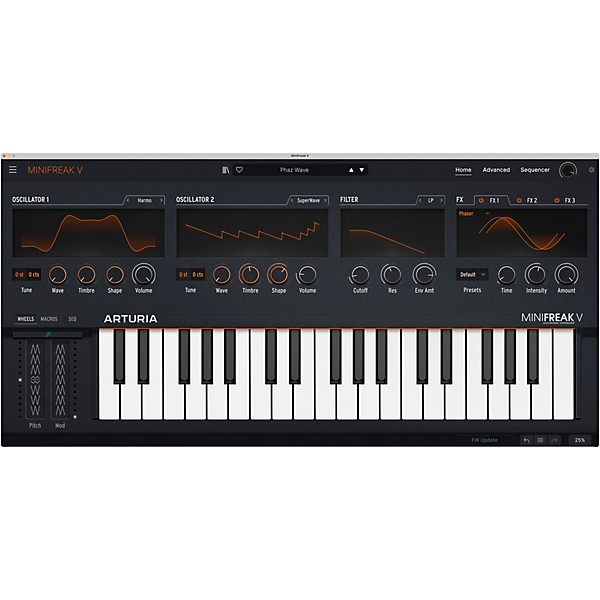Digital Vocal Revolution: Comparing Vocaloid, Synthesizer V, and Vital Synth for Next-Gen Music Production

Introduction
Ever felt stuck with your current vocal synthesis tools and wondered if there’s something more dynamic, intuitive, and downright fun to use? If you’ve been scouring the web for the perfect digital vocal partner, you’re in for a treat. In today’s digital vocal revolution, we’re taking an honest look at four leading platforms that could transform your music production workflow. Whether you’re a seasoned producer or a curious creative, there’s no shortage of exciting features to explore. (Psst… if you’re also looking to snag one through an affiliate link, just know that there are options available—but we’re here to inform, not to sell.)
The industry has been buzzing with chatter about Vocaloid, Synthesizer V, Vital Synth, and the emerging alternative Emvoice One—each a powerhouse in its own right. Over the past decade, digital vocal synthesis has evolved from niche software to a critical component of mainstream music production. As technology advances, so too do the capabilities of these tools, offering users a spectrum of creative options. In our exploration today, we discuss historical evolution, current trends, and the underpinnings of each product’s design philosophy. Prepare to delve into user experiences, technical innovations, and creative strategies that are reshaping how music is conceptualized and produced.
The rapid shift from analog vocal processing to digital synthesis has opened up opportunities that once seemed beyond reach. Producers can now emulate nuanced vocal performances that capture subtle inflections and dynamics, paving the way for truly innovative compositions. With digital vocal platforms, creativity isn’t just about notes on a scale—it’s about crafting soundscapes that tell a story with every syllable. As we journey through the capabilities of each product, consider how these technologies could alter your own creative process, offering not only convenience but a new layer of expression in your works.
In this article, we will outline each product’s strengths, compare their features side-by-side, and discuss potential challenges that may arise. Whether you’re reimagining a classic hit or composing something entirely novel, the right digital vocal tool can make all the difference. So grab your favorite beverage, settle in, and join us on this exploration into the next generation of vocal synthesis—a realm where technology meets art in the most harmonious way.

Key Features & Benefits
Vocaloid review: Strengths and Practical Features
Vocaloid has long been a pioneer in the field of digital vocal synthesis, attracting both amateur and professional producers with its reliability and creative depth. Its interface is designed for creators who want to experiment with digital vocals without confronting an overwhelming learning curve. More than just a tool, Vocaloid cultivates a dynamic creative ecosystem by combining extensive voice libraries with intuitive MIDI integration. The design philosophy behind Vocaloid emphasizes a balance between ease of use and powerful customization, helping you translate ideas into emotive vocal performances.
- Intuitive MIDI Integration: Write melodies with ease and assign lyrics to your arrangements through a simple MIDI note-based interface that invites creativity.
- Extensive Voice Libraries: Explore a wide range of vocal tones from bright and piercing to deep and soulful, ensuring the perfect match for your sound.
- Customizable Tuning: Adjust pitch, vibrato, and tone with surgical precision, which empowers users to tweak every nuance of their digital vocals.
- Community and Support: Benefit from an active community that frequently shares tips, tutorials, and custom presets to enhance your workflow.
- Regular Updates: Enjoy the continuous improvements in voice data and interface design that keep Vocaloid modern and competitive.
Usage tip: Experiment with layering multiple Vocaloid tracks to create rich, harmonized chords that bring your compositions to life.

Synthesizer V review: Realism Meets Innovation
Synthesizer V has quickly earned praise for its ability to generate vocals that are astonishingly lifelike. Designed with modern music production in mind, it marries cutting-edge synthesis algorithms with a beautifully streamlined interface. The software captures the subtle nuances of vocal expression—from breathiness to dynamic vibrato—making it a favorite for producers who want a performance that feels as if it were recorded in a professional studio. Integrating both traditional editing methods and innovative expression controls, Synthesizer V redefines what is possible in digital vocal production.
- Realistic Vocal Synthesis: Achieve authentic vocal performances by leveraging advanced synthesis algorithms that simulate human emotion and expression.
- Streamlined Interface: Navigate through comprehensive controls and editing options that are designed with simplicity and clarity in mind.
- Flexible Editing Options: From fine-tuning pitch to crafting entire vocal phrases, the software offers unparalleled flexibility in editing.
- Integrated Expression Controls: Modify dynamics such as vibrato, intensity, and timing with dedicated controls that bridge software and musicality.
- Enhanced Digital Workflow: Seamlessly integrate Synthesizer V into existing production setups, making it compatible with multiple DAWs and formats.
Usage tip: Use the expression control panel to subtly tweak the emotional delivery of your vocals, giving your tracks that extra spark of realism.

Vital Synth review: Innovation and Modulation Powerhouse
Vital Synth isn’t just another synthesizer in your toolkit; it’s a true canvas for sound design, offering unprecedented control over modulation and wavetable synthesis. Its interface is designed to inspire experimentation, allowing producers to explore a vast array of textures and soundscapes. Vital Synth stands out with its dual filters and extensive modulation matrix, making it an ideal choice both for classic sounds and for creating entirely new sonic identities. Its affordability paired with an expansive feature set renders it a compelling choice for next-generation creators.
- Advanced Wavetable Synthesis: Dive into deep sound design with versatile wavetable options that let you shape sounds in creative and unconventional ways.
- Dual Filters and Modulation: Enjoy pristine sound clarity along with intricate modulation possibilities that enhance synthesis possibilities.
- Affordable and Feature-Rich: Unlock professional-level capabilities without breaking the bank, offering extensive creative freedom at an accessible price.
- Custom Modulation Options: Manipulate a variety of parameters to mold the acoustic character, making each patch uniquely yours.
- Seamless Integration: Incorporates easily into both studio environments and live performance setups with reliable performance and low-latency output.
Usage tip: Experiment with combining different modulation sources to create evolving textures that can transform a simple melody into an immersive audio experience.
Emvoice One review: A Fresh Perspective in Vocal Synthesis
Emvoice One emerges as an exciting alternative in the digital vocal market, offering a unique blend of ease-of-use and innovative cloud-based processing. This platform relieves the traditional limitations of local processing by leveraging server-based technology to deliver pristine vocal synthesis. Emvoice One is built with a focus on accessibility, ensuring that both beginners and seasoned professionals can harness its potential without a steep learning curve. By combining cutting-edge technology with an intuitive workflow, Emvoice One opens up a new frontier in digital vocal production that emphasizes both quality and speed.
- Cloud-Based Synthesis: Benefit from powerful server-side processing that ensures rapid, high-quality vocal generation without taxing your local system.
- User-Friendly Setup: Enjoy a streamlined interface that simplifies the digital vocal creation process, making it accessible to newcomers and experts alike.
- Innovative Sound Engine: Experience a fresh take on vocal synthesis with algorithms designed to capture the subtle emotional cues of a human performer.
- Seamless Integration: Easily integrate Emvoice One with your existing digital audio workstation, facilitating a smooth transition within your workflow.
- Constant Updates and Community Feedback: Stay on top of the latest innovations with regular updates that reflect user input and evolving technology.
Usage tip: Leverage the cloud-based processing to experiment with multiple vocal layers simultaneously, creating intricate harmonies that would be difficult to achieve on a single machine.
Comparison vs. Alternatives: Next-Gen Vocal Synthesis Options
When it comes to achieving a digital vocal revolution, it’s natural to compare these products side-by-side. Below is a table comparing some of the core aspects of Vocaloid, Synthesizer V, Vital Synth, and Emvoice One. This comparison highlights how each product addresses the creative needs of modern producers while also providing alternative features for specialized processes.
| Feature | Vocaloid | Synthesizer V | Vital Synth | Emvoice One |
|---|---|---|---|---|
| Vocal Realism | High quality with a signature digital timbre; vast voice banks provide diverse tonal options | Exceptionally lifelike vocal synthesis; excellent for capturing performance dynamics | Offers unique tonal textures, ideal for experimental sound design | Delivers natural-sounding vocals with a modern, cloud-enhanced processing engine |
| Interface & Usability | User-friendly interface with MIDI integration; ideal for traditional studio workflows | Streamlined and intuitive design; advanced editing controls for expressive performances | Feature-rich with advanced modulation; may require investment in learning complexity | Simple, accessible interface; cloud-based system reduces local setup hassles |
| Customization & Modulations | Flexible tuning options and vibrato adjustments; extensive community presets available | Comprehensive editing suite; granular control over vocalist-like expressions | Deep modulation matrix with dual filters; perfect for sound designers seeking innovation | Customizable via online updates and preset banks; responsive to real-time creative adjustments |
| Integration in Studio Settings | Reliable for digital vocal arrangements across various genres | Stands out as a near-professional tool for realistic backing vocals and main leads | Highly versatile, suitable for both experimental and conventional productions | Optimized for quick integration into digital workflows; excellent for both demos and full projects |
| Price & Accessibility | Mid-range pricing with strong user and developer community backing | Competitive pricing with regular feature updates and cutting-edge innovation | Unbeatable affordability paired with a robust feature set | Modern subscription model designed to democratize access to high-quality vocal synthesis |
This table underscores that while every product has its own niche, the choice ultimately depends on your production needs. Vocaloid offers tried-and-true reliability; Synthesizer V is celebrated for its near-human vocal realism; Vital Synth is perfect for experimental sound designers; and Emvoice One provides a modern, accessible approach for those looking to integrate cloud technology with vocal synthesis.
Pros & Cons
Now that we’ve unpacked the key features and compared how these options stack up, let’s look at some honest pros and cons for each digital vocal tool. Breaking down the advantages and drawbacks can help clarify which product best fits your creative demands.
Vocaloid
Pros:
- Intuitive interface that simplifies complex MIDI integration
- Extensive voice libraries offering a wide palette of vocal tones
- Highly customizable tuning and vibrato options
- Strong community support with numerous tutorials and presets
- Proven track record and regular updates keep it competitive
Cons:
- The interface may feel dated compared to more modern designs
- Some users report limitations in achieving ultra-realistic vocals
- Occasional dependency on third-party plugins for enhanced effects
- Steeper learning curve for users transitioning from other software
- Limited flexibility in some niche experimental sound scenarios
Synthesizer V
Pros:
- Astonishingly realistic vocal synthesis that closely replicates human nuances
- User-friendly and modern interface that speeds up the learning process
- Comprehensive editing tools for precise vocal expression
- Effective integration with various digital audio workstations
- Regular updates and a growing supportive community refine its performance
Cons:
- Advanced features can be overwhelming to beginners
- Initial software setup may require additional configuration time
- Some users might experience intermittent performance issues with large projects
- The detailed control options can sometimes slow down workflow for quick demos
- Limited voice library expansion compared to legacy products
Vital Synth
Pros:
- Extremely affordable given its robust and feature-rich design
- Advanced wavetable synthesis offers a vast array of sound shaping opportunities
- Dual filters and deep modulation provide professional-grade sound design
- Ideal for producers who enjoy experimental and innovative sound creation
- Regular interface updates integrate new synthesis trends and user feedback
Cons:
- A steeper learning curve may deter casual users or beginners
- Complex modulation options can require additional time to master
- May necessitate extra third-party plugins for full vocal synthesis integration
- Interface design might seem cluttered to users expecting simplicity
- Occasional latency issues in highly detailed modulation settings
Emvoice One
Pros:
- Cloud-based processing reduces local system demands while ensuring high quality
- Simple, intuitive interface ideal for both newcomers and experienced producers
- Innovative algorithms capture expressive, emotionally nuanced vocals
- Easy integration with modern digital audio workstations via a subscription model
- Regularly updated presets and features driven by community input
Cons:
- Reliance on an internet connection can be a drawback in low-bandwidth environments
- Subscription costs may accumulate over time compared to one-time purchases
- Less control over deep customization may not suit advanced users
- Cloud processing can introduce latency issues during live performance setups
- Relatively new to the market, so long-term support and updates are still evolving
Conclusion
In a world where digital vocal production continually redefines the boundaries of music innovation, selecting the right tool is paramount. Whether you lean toward the classic reliability of Vocaloid, the near-human realism of Synthesizer V, the innovative modulation of Vital Synth, or the fresh, cloud-based approach of Emvoice One, each platform presents its own set of opportunities and challenges. The evolution from conventional vocal processing to these advanced digital tools marks an exciting era for producers and sound designers alike.
Our journey through these platforms has underscored the significance of aligning your creative workflow with the tool that best complements your style and project demands. While Vocaloid remains a beloved mainstay with its extensive voice libraries and intuitive design, Synthesizer V pushes the envelope with expressive control and natural performance dynamics. Vital Synth, on the other hand, continues to be a playground for those who seek experimental soundscapes, and Emvoice One offers modern convenience through its cloud-based innovation.
The key takeaway is that no single tool can claim universal superiority. Instead, each product provides unique insights, adding layers of creative potential to your music production arsenal. As technology continues to advance, these tools will only become more integrated, dynamic, and indispensable. Ultimately, the decision rests on your personal artistic vision, technical expertise, and overall production goals. Embrace experimentation and let your creativity be the guiding force in your next masterpiece.
Whether you decide to incorporate multiple digital vocal tools into your setup or focus on mastering one, remember that these platforms are designed to enhance and elevate your creative output. The digital vocal revolution is not just about the technology—it’s about empowering artists to break new ground and express themselves in ways that traditional methods never could. Happy producing, and here’s to pushing the boundaries of sound!
FAQs
Q1: What is the primary advantage of using Vocaloid for digital vocal production?
Vocaloid stands out for its extensive voice library and intuitive MIDI integration, making it a top choice for producers who value ease of use alongside a rich, creative ecosystem. Its long history in the industry further ensures that support and community knowledge are readily available.
Q2: How does Synthesizer V achieve such realistic vocal performances?
Synthesizer V employs advanced synthesis algorithms and detailed expression controls that capture the subtle nuances of human vocal delivery. This allows for dynamic and lifelike performances, whether you’re creating gentle backing vocals or powerful lead melodies.
Q3: Can beginners easily learn to use Vital Synth, given its advanced modulation options?
While Vital Synth does present a steeper learning curve due to its deep modulation and dual filter system, its affordable pricing and extensive online tutorials help mitigate the challenge, making it accessible for dedicated beginners eager to explore innovative sound design.
Q4: What sets Emvoice One apart from the other digital vocal synthesis tools discussed?
Emvoice One distinguishes itself with a cloud-based processing model that reduces local system strain while delivering high-quality vocal synthesis. Its user-friendly interface and modern subscription model make it particularly appealing for producers who want a simple yet powerful solution.
Q5: Are these digital vocal tools suitable for both demo tracks and full studio productions?
Absolutely. Each tool offers the flexibility needed for rapid demo creation as well as detailed studio work. The choice depends on your workflow preferences—whether you require immediate output with minimal setup or the extensive controls necessary for professional-grade production.
Q6: How can I decide which digital vocal tool best fits my creative workflow?
Consider your specific needs and production style. If you prefer a classic interface with extensive community support, Vocaloid might be your match. For natural-sounding vocals and intricate control, Synthesizer V is ideal. If experimental sound design and shockingly creative modulation excite you, Vital Synth is worth exploring. Meanwhile, if convenience and modern cloud-based processing are priorities, Emvoice One offers a fresh and innovative alternative.
Whether you’re reinvigorating your sound with these tools or integrating them into an established workflow, taking the time to understand each product’s strengths will help you unlock fresh creative potentials. The future is bright, and digital vocal technology is here to redefine music production one note at a time.
Happy producing, and may your creative journey continue to evolve with every new vocal innovation you embrace.




